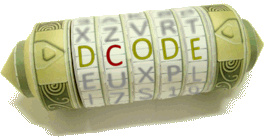Tool/Calculator with fractions and simplification. Calculating with fractions involves specific computation steps for numerator and denominator, before simplifying.
Calculator with Fractions - dCode
Tag(s) : Symbolic Computation
dCode is free and its tools are a valuable help in games, maths, geocaching, puzzles and problems to solve every day!
A suggestion ? a feedback ? a bug ? an idea ? Write to dCode!
Calculator with Fractions
Fractions Calculator
Answers to Questions (FAQ)
What is a fraction? (Definition)
A fraction (or fractional notation) is a mathematical value composed of a numerator and a denominator generally represented one above the other and separated by a fraction line.
In practice, a fraction is a division, the numerator is the dividend and the denominator is the divisor, the result is sometimes called a quotient.
How to simplify fractions to irreducible form?
dCode first performs calculations (addition, subtraction, multiplication or any other calculation of the initial mathematical expression) and makes them irreducible fractions by reducing them to the same denominator. Simplification is given in result, as a fraction in irreducible form.
Example: $$ \frac12 + \frac14 = \frac34 $$
How to reduce to the same denominator?
dCode can calculate the LCM least common multiple of the denominators in order to realize additions and subtractions.
Example: If the denominators of the fractions to be added are 8 and 3 then LCM(8,3)=24 and the fraction should have as denominator 24: 15/8-2/3 = 29/24
A multiplication of the numerator implies a multiplication of the denominator to preserve the equality of the fraction.
How to add fractions?
Addition of a fractions requires reducing the fractions to the same denominator (attempting to simplify the fractions beforehand if possible), then adding the numerators (attempting to simplify the resulting fraction if possible).
Example: $$ \frac{1}{2} + \frac{1}{3} = \frac{1 \times 3}{2 \times 3} + \frac{1 \times 2}{3 \times 2} = \frac{3}{6} + \frac{2}{6} = \frac{3+2}{6} = \frac{5}{6} $$
How to subtract fractions?
Fractions subtraction is the same as addition, except numerators are subtracted instead of adding them.
Example: $$ \frac{1}{2} - \frac{1}{3} = \frac{1 \times 3}{2 \times 3} - \frac{1 \times 2}{3 \times 2} = \frac{3}{6} - \frac{2}{6} = \frac{3-2}{6} = \frac{1}{6} $$
How to multiply fractions?
The multiplication of fractions consists in multiplying the numerator between them then the denominators between them (try to simplify the fractions before and / or after if possible).
Example: $$ \frac{1}{2} \times \frac{2}{3} = \frac{1 \times 2}{2 \times 3} = \frac{2}{6} = \frac{1}{3} $$
How to divide fractions?
The division of fractions can be written as the multiplication of the first fraction by the inverse of the second fraction (inversion of the numerator and the denominator). Then apply the multiplication technique.
Source code
dCode retains ownership of the "Calculator with Fractions" source code. Any algorithm for the "Calculator with Fractions" algorithm, applet or snippet or script (converter, solver, encryption / decryption, encoding / decoding, ciphering / deciphering, breaker, translator), or any "Calculator with Fractions" functions (calculate, convert, solve, decrypt / encrypt, decipher / cipher, decode / encode, translate) written in any informatic language (Python, Java, PHP, C#, Javascript, Matlab, etc.) or any database download or API access for "Calculator with Fractions" or any other element are not public (except explicit open source licence). Same with the download for offline use on PC, mobile, tablet, iPhone or Android app.
Reminder: dCode is an educational and teaching resource, accessible online for free and for everyone.
Cite dCode
The content of the page "Calculator with Fractions" and its results may be freely copied and reused, including for commercial purposes, provided that dCode.fr is cited as the source (Creative Commons CC-BY free distribution license).
Exporting the results is free and can be done simply by clicking on the export icons ⤓ (.csv or .txt format) or ⧉ (copy and paste).
To cite dCode.fr on another website, use the link:
In a scientific article or book, the recommended bibliographic citation is: Calculator with Fractions on dCode.fr [online website], retrieved on 2025-12-31,
